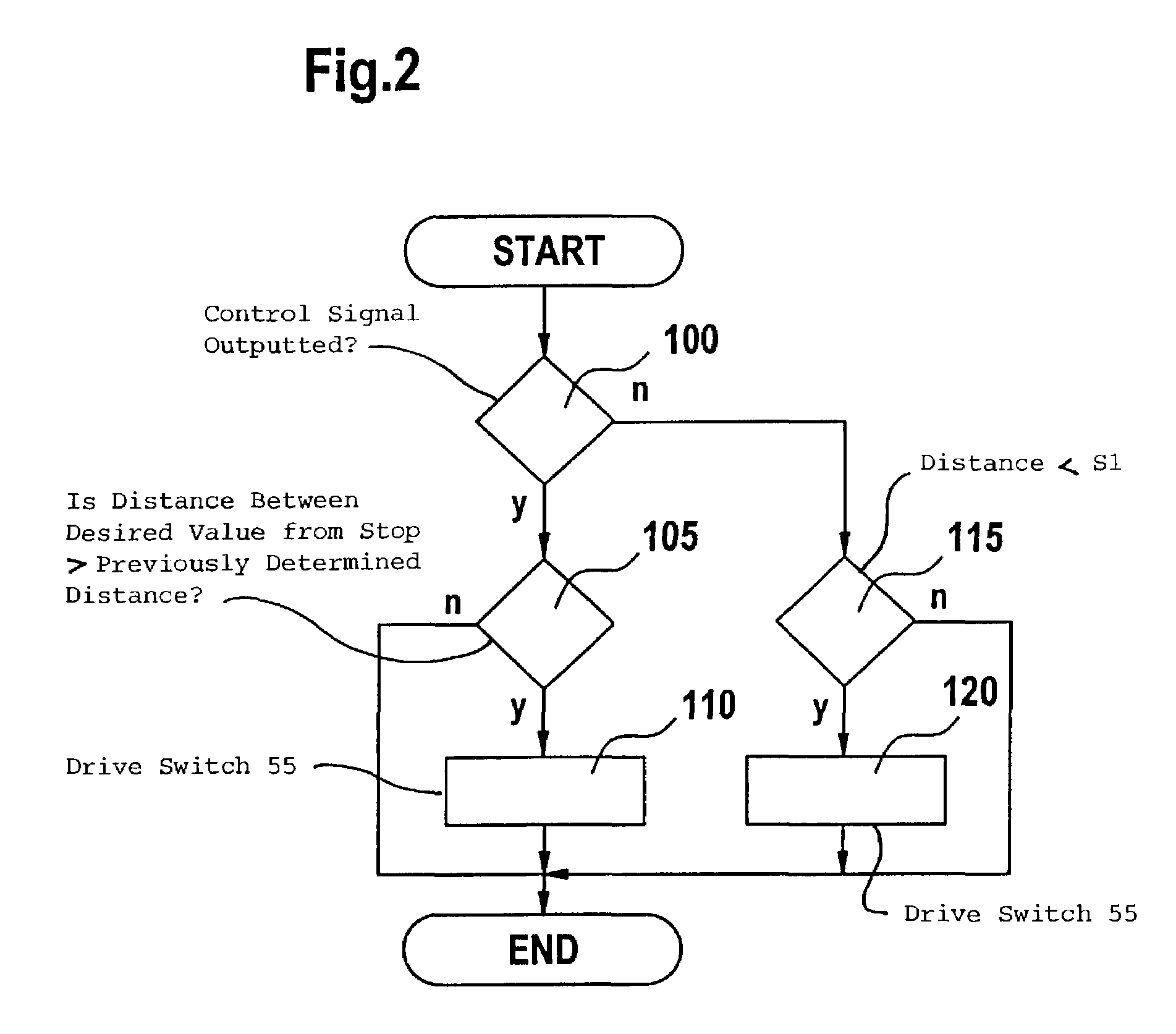Method and arrangement for controlling the position of an actuating element
- Summary
- Abstract
- Description
- Claims
- Application Information
AI Technical Summary
Benefits of technology
Problems solved by technology
Method used
Image
Examples
Embodiment Construction
[0016]In FIG. 1, reference numeral 35 identifies an arrangement for controlling the position of an actuating element 1. Means 15 are provided for bringing the position of the actuating element closer to a desired value within a displacement range. The means 15 can, for example, be configured as a controller which causes an actual value for the position of the actuating element 1 to track the desired value within the displacement range of the actuating element 1. At least one stop for the actuating element 1 is provided which limits the displacement range of the actuating element. The actuating element 1 can be maximally driven up to the at least one stop. A displacement of the actuating element beyond the at least one stop is not possible. The at least one stop can, for example, be a mechanical stop.
[0017]In FIG. 4, an example of such an actuating element 1 is shown. The actuating element 1 can, for example, be a throttle flap, a charge movement flap, an exhaust-gas recirculation va...
PUM
 Login to View More
Login to View More Abstract
Description
Claims
Application Information
 Login to View More
Login to View More - R&D
- Intellectual Property
- Life Sciences
- Materials
- Tech Scout
- Unparalleled Data Quality
- Higher Quality Content
- 60% Fewer Hallucinations
Browse by: Latest US Patents, China's latest patents, Technical Efficacy Thesaurus, Application Domain, Technology Topic, Popular Technical Reports.
© 2025 PatSnap. All rights reserved.Legal|Privacy policy|Modern Slavery Act Transparency Statement|Sitemap|About US| Contact US: help@patsnap.com



